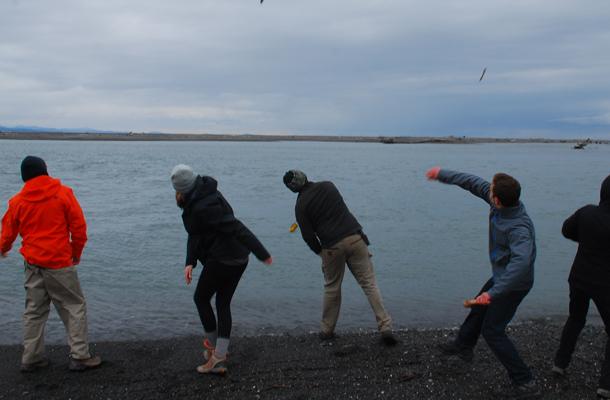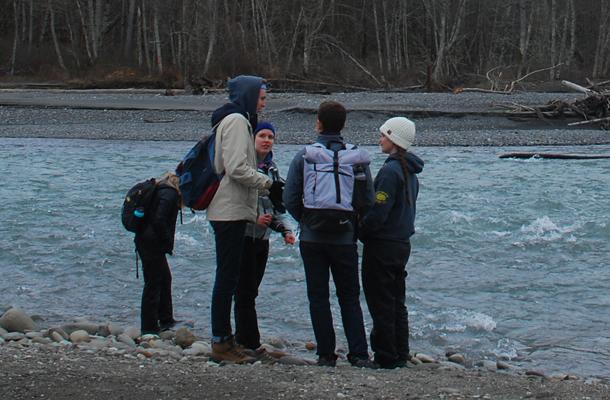Annual Science Trip Breaks Tradition
March 7, 2017
Jane Kelson, along with a handful of other teachers and a group of students, explored the temperate rainforests of the Olympic Peninsula during the week of February 28. The outdoor education trip, which has visited Yosemite National Park for the past 20 years, made its first trip to the Washington State location after the traditional destination was closed due to health concerns related to a recent flu outbreak.
“They had illness up there the week before we went. They weren’t sure what it was but they didn’t feel comfortable having a group up and stay and lodging that people before us had been sick so they cancelled that trip, and we had totally agreed with that decision,” said Kelson, the trip’s coordinator.
The science department then discovered the Olympic Peninsula program, run by the same organization that hosts the Yosemite institute, which had one last opening just a week after the Yosemite trip.
According to Kelson, although it was convenient to be able to keep the trip going, the transportation was a little bit more complicated. “We had to fly, and then take a bus to get there, so it was a longer journey,” she explained.
Overall, Kelson said, the trip north was as valuable as the traditional trip to the Sierras, though there were differences. “It was a couple weeks later and we went on a Tuesday through a Monday so we went over a weekend so that was different. We usually just step out for an entire week,” said Kelson.
“I would say that they’re both great programs. The Yosemite program is maybe a little bit more rigorous and covers a lot more territory because we start in the valley and then we go up to the east end of the park and with the Olympic Peninsula program we were in the same spot for the whole week, so smaller territory, not as much rigorous hiking, but a lot of exploration,” said Kelson.
The first few days of the trip were designed for hiking and becoming comfortable with the environment. Senior Lauren Williams, a participant, said, “We basically hiked by one of the rivers and went to a waterfall which was really cool and then another day we hiked up a mountain called Storm King, and that one was really fun. The first half was kind of in the forest and then you hiked up and got more to the mountain and it was snowing and it was really fun.”
“We got to do little experiments. We got to use different science tools like a castrel which was a favorite for all of us,” said Chloe Bouchy.
Bouchy highly recommends the experience to anyone who is interested in the “environment and preservation [and] conservation.” Bouchy said that the experience somewhat like that of a science camp.
While science was definitely a major part of the program, the experience had a broader scope that covered a variety of scholastic disciplines. “It’s not just science. We do science, and we do some art, and we do some reflection. It’s about learning but also social and emotional growth as well,” said Kelson.
“One student actually said to me that one of the things he learned is that you, if you are curious, you can learn anywhere, learning doesn’t just happen in the classroom, and that there is a lot to learn by going outside, and they learn that they actually do know a lot and really enjoy going out and applying what they learned and connecting a lot of dots,” Kelson said.
Another key aspect of the trip is the unique interaction between students and teachers in a non-traditional learning environment. According to Kelson, participants “get to know people that they otherwise wouldn’t know, even though they are on campus with people, they make new friends and find out that they have a lot in common with people they didn’t think they had anything in common with”

